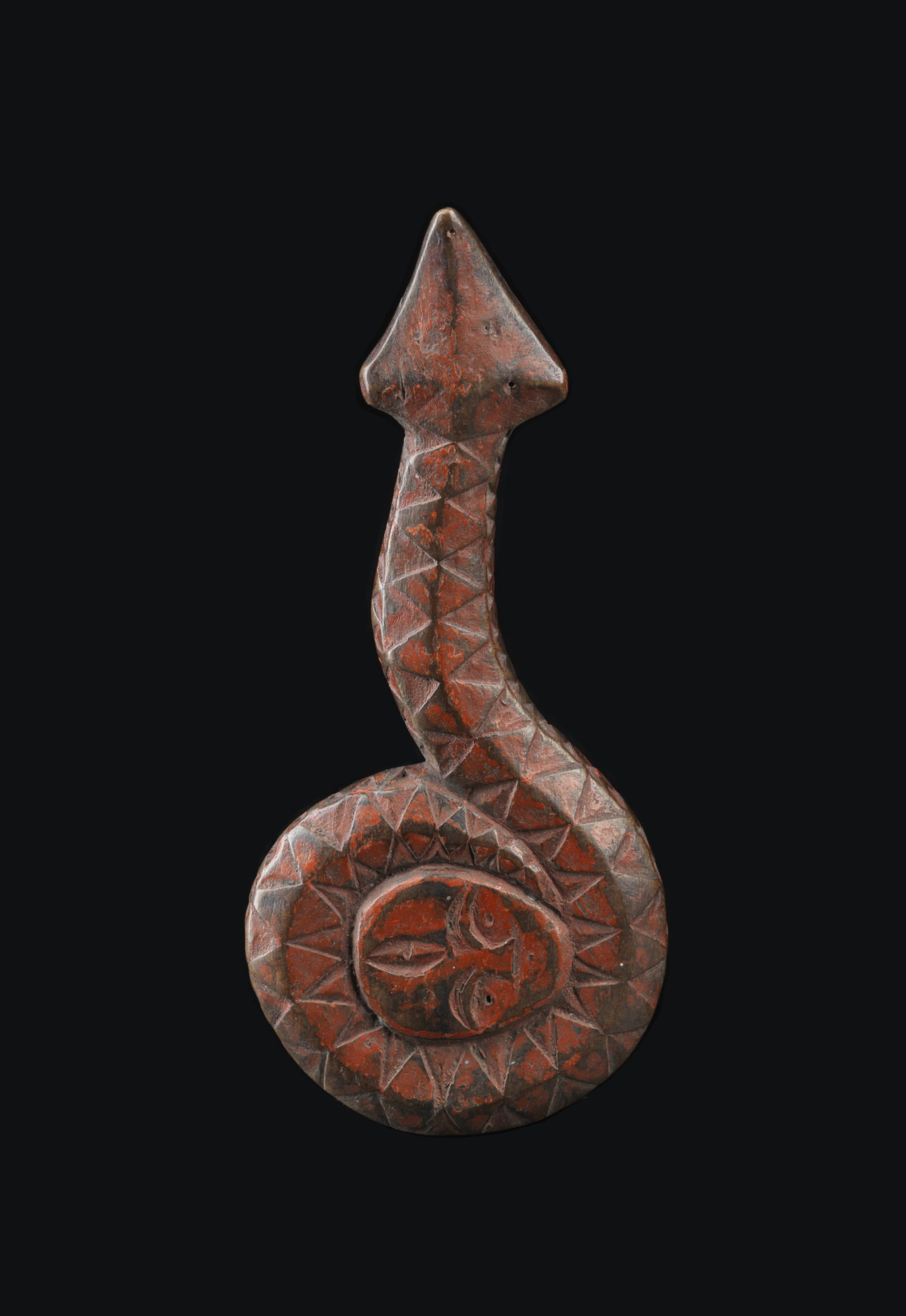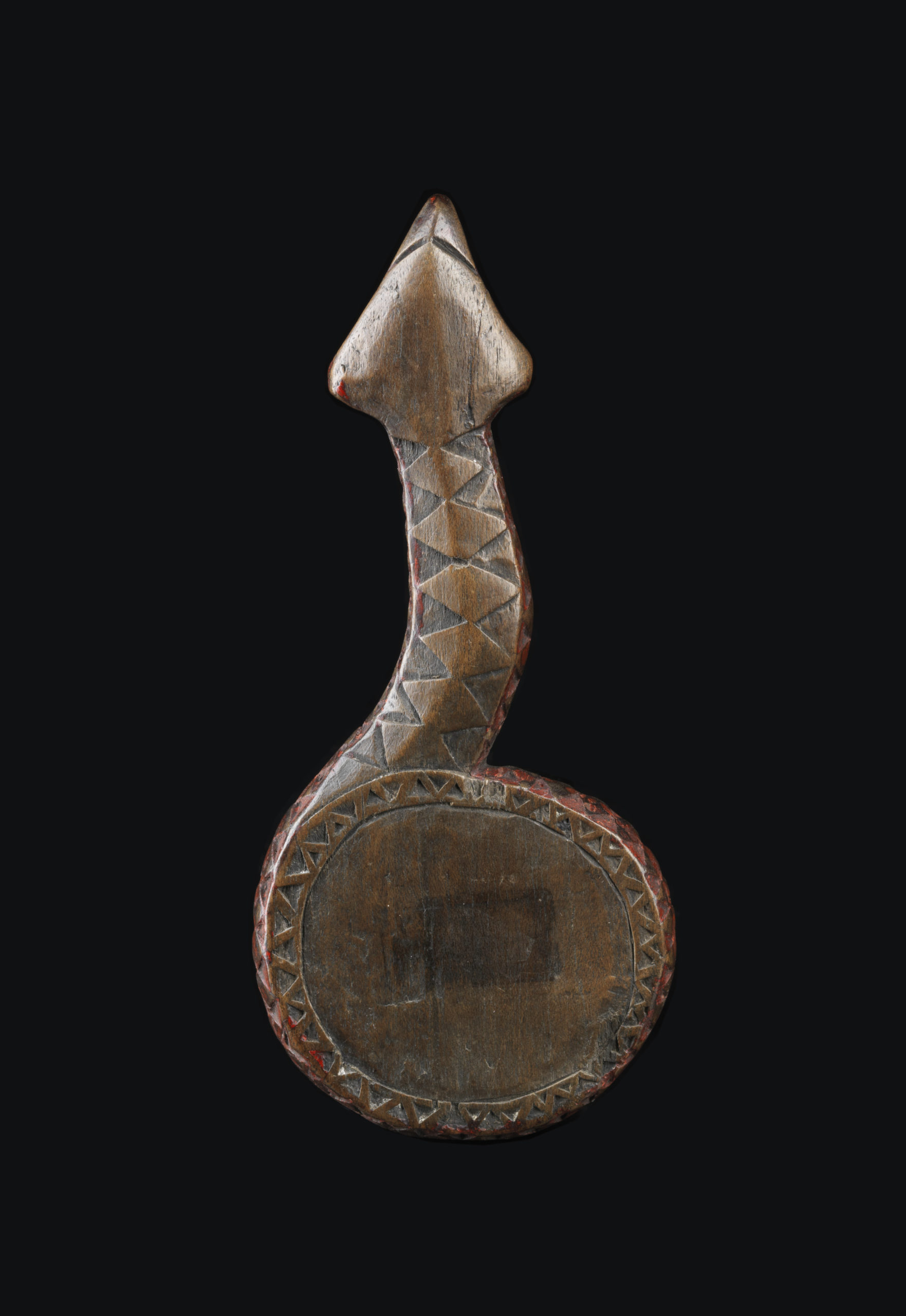Waxy trowel
| Object | Snake-effigy, Waxy trowel |
| Culture | Formosa / Southern, Paiwan groups |
| Time | 19th century |
| Dimensions | Length 14 cm |
| Material | Wood, lacquer |
This wax trowel is carved from a piece of wood and decorated with red lacquer. For the production of clothes the Paiwan people used bast and nettle fibers. For further processing the fibers were suppled with wax. The back of the depicted snake object is flat and was used as a spatula to hold the wax or to flatten the warm wax on the fibers. Weaving is an activity considered very important by the Paiwan and other Austronesian societies and is already depicted as an essential scenario on kettle drums and containers of the Bronze Age. On Borneo and in Malaysia weaving is still called kajau indah, “war of women”.
This representation of the holy snake Mura or Vorun is carved from wood and belongs to the Paiwan culture. In the centre of the rolled up snake is a human head. The snake is of outstanding importance in Taiwan’s world view: it is not only the chief’s dead quarter but also an inhabitant of the underworld. Yes, the snake can take on human form and thus either bring good luck or bring disaster. One of the reasons for the snake motif is certainly the geographical location of the Taiwanese Paiwan habitat: The south-east of Taiwan with subtropical vegetation and humid climate offers favourable conditions for countless species, including the highly poisonous hundred-step snake, which was even partly kept as a pet by the Paiwan chiefs in the past.
The snake is a symbol of special importance for the Paiwan. It is believed that Mura, the “hundred step snake”, is the ancestor of the nobility. According to a legend, in prehistoric times the sun laid two eggs on a mountain peak: one white and one black. Vorun hatched the eggs from which the first nobles hatched. Therefore snake depictions are understood as explicit symbols of the high nobility. The human head is a central motif in the Paiwan culture; it can possibly also be understood as a representation of the sun, or as one of the eggs from the brood of Vorun. Human heads refer to the millennia-old practice of head cult and head hunting on Formosa.





